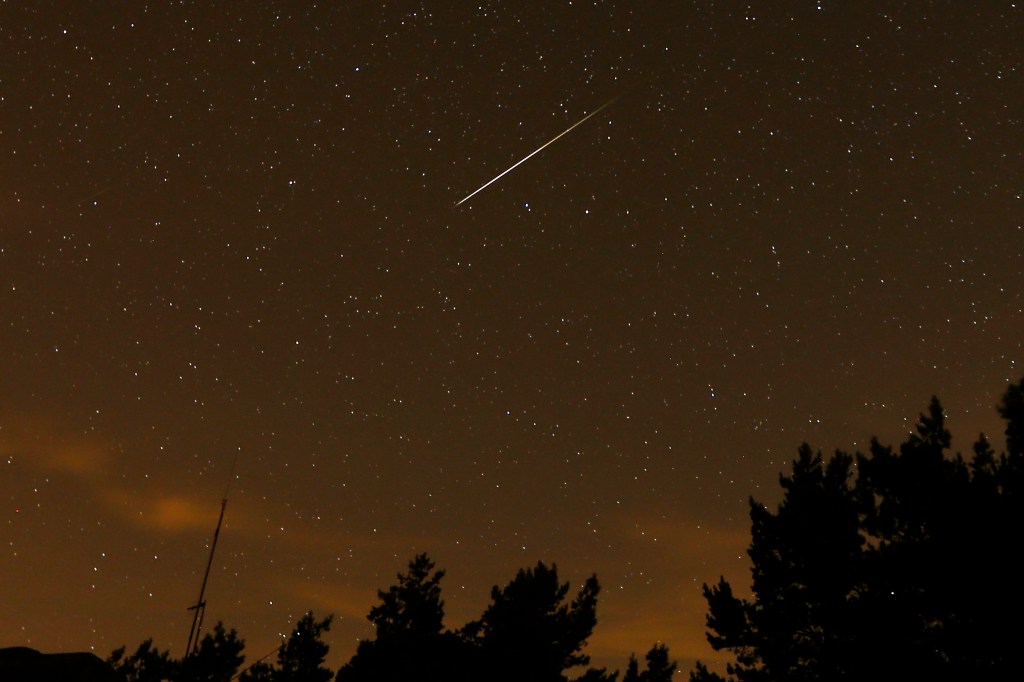Earth is tumbling through the debris trail of comet Swift-Tuttle — producing the Perseid meteor shower, one of the most anticipated sky shows of the year, and hitting its peak Sunday night into Monday morning.
The shower, known for its occasional fireballs, sends shooting stars cascading from a radiant point in the Perseus constellation in the northeastern sky. While it’s been going on for a couple of weeks and will continue through the end of the month, Monday’s pre-dawn hours will provide the best show, with up to 90 meteors or more per hour possible, astronomers say.
While the shooting stars appear to stream out of the constellation Perseus, that’s not the source of the meteors, NASA explains. That is left to Swift-Tuttle, discovered separately in 1862 by Lewis Swift and Horace Tuttle. Its 16-mile-diameter nucleus puts it on the large end of the comet range, and it takes 133 years to orbit the sun, the space agency’s website says. In 1865, astronomer Giovanni Schiaparelli made the connection between the meteor shower and the comet. The comet itself has not visited our inner solar system since 1992.
The moon, whose light has been known to get in the way, will be at just one-quarter, a mere crescent, and that will set just before the real show begins. The best viewing is between midnight and dawn, though meteors can also be spotted starting after sunset — when Perseus will have risen above the northeastern horizon. Shooting stars appearing during this time will have long trajectories as they languorously skim Earth’s upper atmosphere, earning the moniker “earthgrazers,” Sky & Telescope points out.
As night deepens and darkens, more meteors will flash across the sky. Their light belies their size, given that the particles range from the size of sand grains to boulders.
They slam into Earth’s atmosphere at 133,200 mph — or 37 miles per second — burning up at temperatures higher than 3,000 degrees Fahrenheit, according to Space.com. They become visible about 60 miles above the ground.
The Perseids are known for blasts of color, especially, as University of Warwick astronomer Don Pollacco said, “bright blue meteors — and lots of them.”
With News Wire Services
